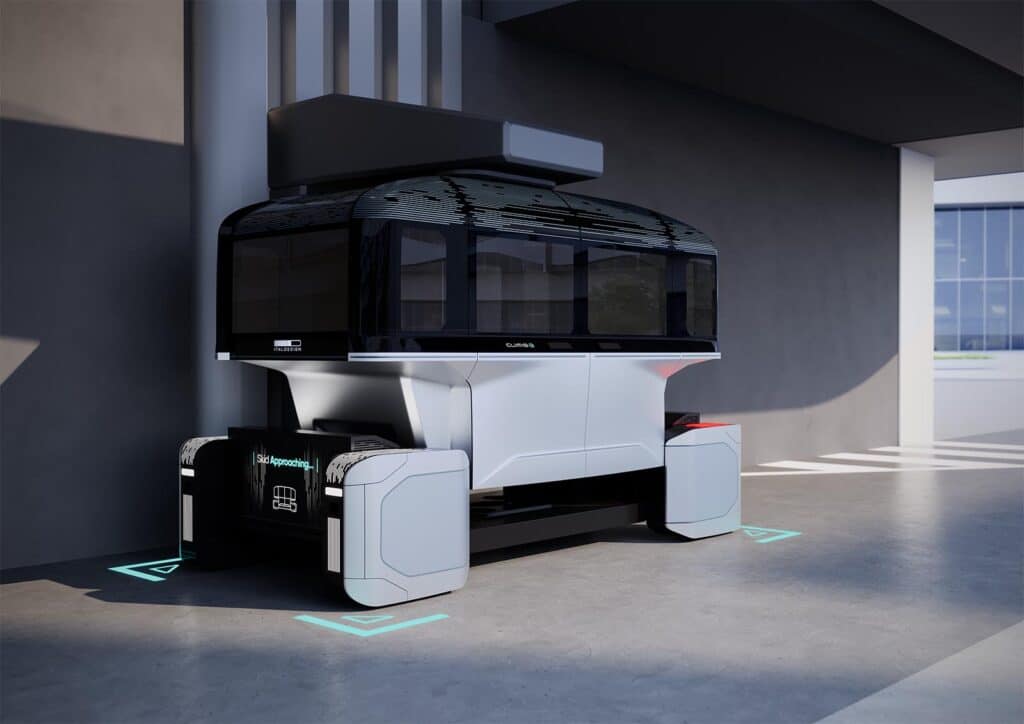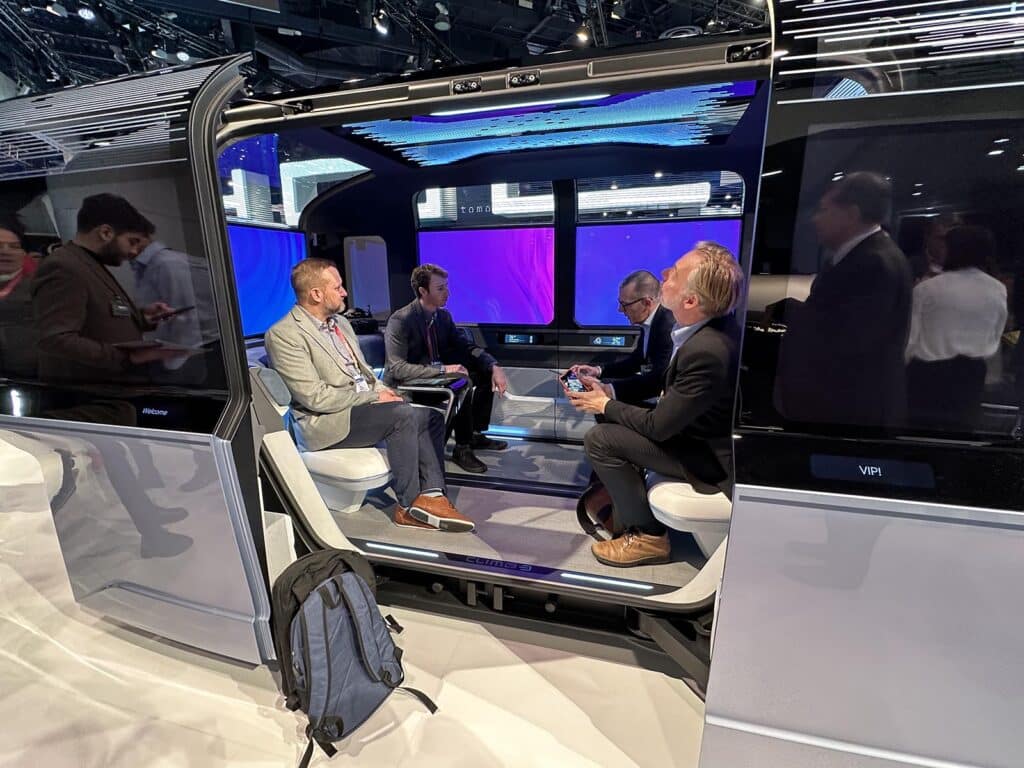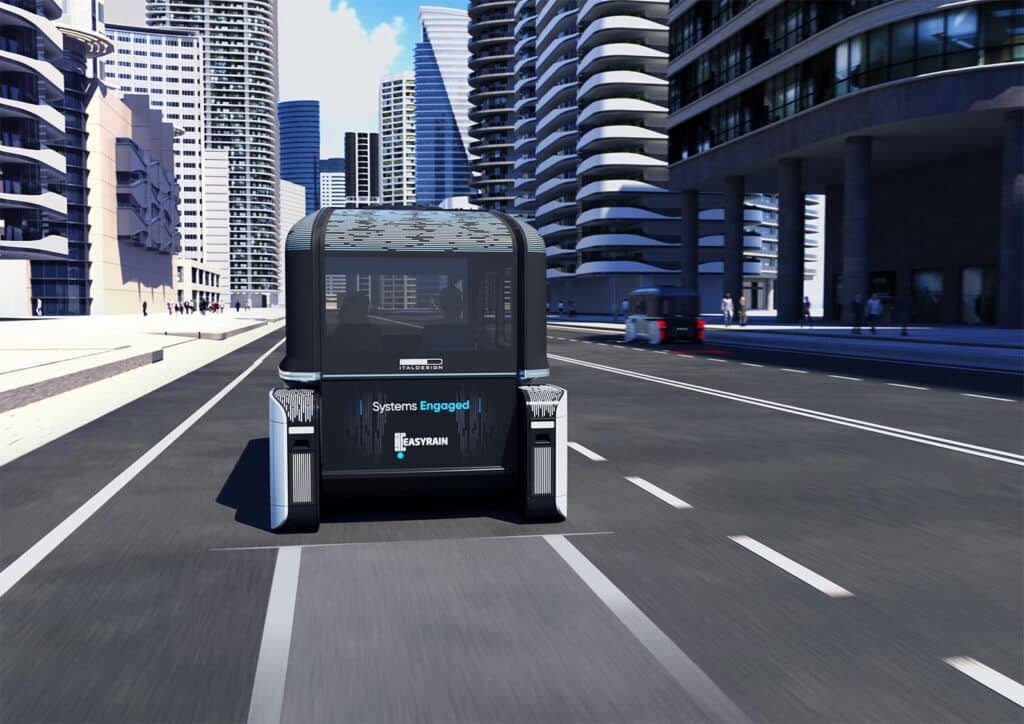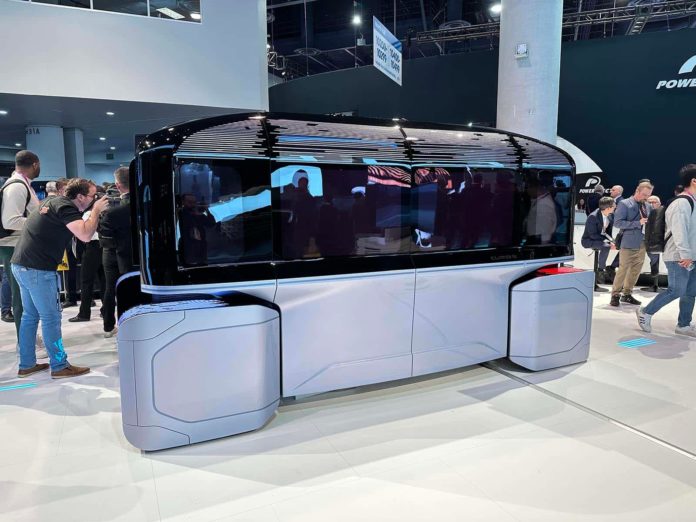At first glance, the Italdesign Climb-E Concept looks like a toaster on wheels, one of several boxy driverless vehicle concepts that have been introduced at the Consumer Electronics Show in recent years.
But it’s far more ambitious.
The prototype, described as an “evolution in the concept of local sustainable urban mobility,” can perform an array of different functions, transforming itself from an electric shuttle bus into an office, an addition to your home, even an elevator.
“Climb-E offers the possibility of traveling by starting right from your door or place of work, staying in your private environment without ever having to change vehicles,” the Turin-based design house explained in a release describing the Climb-E.
Toaster on wheels
On display at the Las Vegas Convention Center, the concept vehicle resembles a number of other toaster-shaped CES concepts, such as Toyota’s e-Palette. And one of its most important functions would be to move people from place to place. But the driverless battery-electric vehicle has a lot of other functions it can perform, said Laura de Martini, the project’s manager.

The Climb-E actually has two distinct parts. There’s the boxy “capsule,” or passenger compartment, she said during an interview at CES 2023, as well as the “skid,” an all-electric wheeled platform it hooks up to.
Together, they can be used to drive, much like a shuttle bus or a roomy limousine. The capsule can be outfitted with couches, a desk, even a bed and furniture. Its windows use an electroluminescent technology that can be transformed from transparent into videoscreens with the touch of a button, to create what de Martini calls “an immersive experience.”
Immersive experience
The screens can surround passengers with streaming videos, maps or even an augmented reality view of the world around the Climb-E. Driving downtown, de Martini demonstrated the screens could add information on each of the buildings along the way.

Reach your destination and “It could become an elevator, so to speak,” de Martini said. The capsule would separate from the skid and then latch onto a hoist system developed in partnership between Italdesign and the Schindler Group, one of the world’s largest manufacturers of elevators and escalators.
The concept isn’t as crazy as it might seem. At the new Aston Martin Residences in Miami, an owner can drive their vehicle onto a platform that lifts it up to their floor where it then parks alongside their condo.
From car to condo or office
The Climb-E could go the next step. It can be “integrated into your apartment giving you an extra room or extra space” for storage, explained de Martini, or “it could be integrated into your office,” as well.

Another application would be “to bring public services to your door, or to your office.” Perhaps a mobile Starbucks, said de Martini, “or dental or health care, or a restaurant.”
Climb-E could be dispatched to your location with tables and silverware, your meal ready to eat for a group dining experience.
“Complete flexibility”
“The bottom line is that the interior is designed with complete flexibility,” she added. “I could make it pretty much anything I want it to be, depending on the application.”
That said, it’s anyone’s guess when a concept like Climb-E would be ready to roll off the show floor at CES and out onto public roads. Potentially, the Climb-E concept could be outfitted with conventional driver’s controls, but that’s not what Italdesign envisions. So, while the first driverless taxis are being tested by companies like Cruise and Waymo, the technology isn’t ready for broader application and might not be until late this decade — or beyond.
But once full autonomy becomes a reality, said de Martini, Climb-E demonstrates the ways that we could transform today’s basic forms of transportation.

